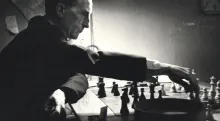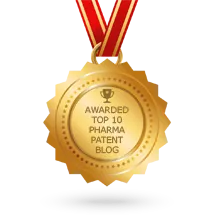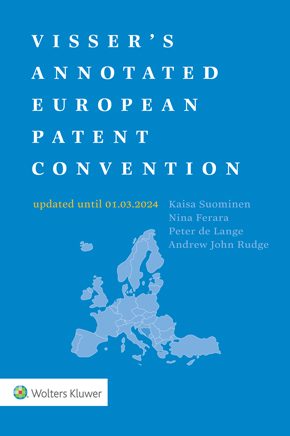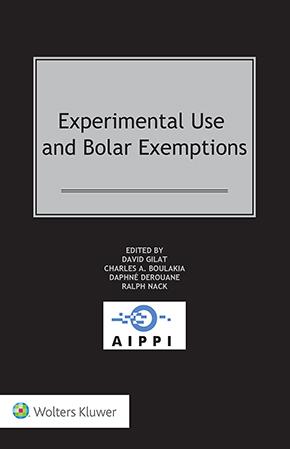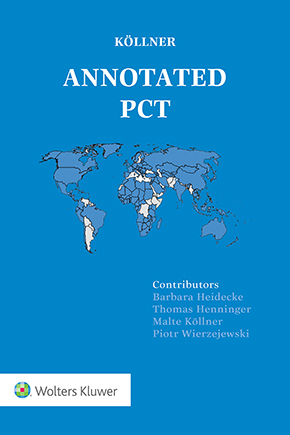From Red Dove to Reason — Reading German Patent Law Through Stief, Haedicke & Wünsche
October 21, 2025
German patent law as a system of reason
I had the chance to receive, ahead of publication, a copy of Pharmaceutical, Biological and Chemical Patents by Marco Stief, Maximilian Haedicke, and Annelie Wünsche. Published by C.H. Beck, Hart, and Nomos, the book already reads like a reference: a dense, lucid handbook, written entirely in English, that lays out German case law in pharmaceutical, biological, and chemical patents.
From the opening pages, the aim is explicit: to make the guiding principles of the Bundesgerichtshof (BGH) and the Bundespatentgericht (BPatG) accessible to an international readership—those principles that, often quietly, structure European patent law as a whole. The book is organized in three parts: validity (technicity, novelty, inventive step, sufficiency, added matter), enforcement, and an original treatment of compulsory licensing. Each chapter starts with the statutory provision, then distills the jurisprudential principles, and finally summarizes the cases with their technical backdrop. In form, it recalls an Anglo-American casebook—methodical, didactic, immediately usable.
Some may balk at the unapologetically German angle. That would be to forget that German law has historically been the doctrinal engine of European patent law. It permeates practice at the EPO and, now, at the Unified Patent Court (UPC). In that sense, the book is not a retreat but an opening: it gives non-German-speaking practitioners and scholars rare access to a legal culture of remarkable rigor.
I read it with particular interest: my own doctoral dissertation on the link between technology and patent law was largely written at the Max Planck Institute in Munich. Perhaps for that reason, I found in these pages that intellectual discipline so characteristic of German law: a law that seeks less to codify than to understand. And the effort to make this tradition readable to the world deserves praise; one translates not only a language, but a way of thinking about legal rationality.
Technicity as the keystone of the German system
Opening with “technical character” is no accident; it reveals a structured mind. Where others might begin with exclusions, Stief, Haedicke, and Wünsche place the question of patentability within the positive dynamic of Technizität (technicity or technical character). Exclusions then appear as the natural limits— the negative counterpart—of that concept, not as freestanding exceptions. They respond to the positive definition of technicity formulated in Red Dove.
Indeed, the famous Red Dove decision (BGH, 1969) serves here as a matrix: an invention is a “Lehre zum planmäßigen Handeln unter Einsatz beherrschbarer Naturkräfte”—a technical teaching that uses controllable forces of nature to achieve a foreseeable result. Quoted and discussed throughout, this formula remains the bedrock from which the BGH assesses inventions at the life-science frontier. It irrigates modern decisions: Receptor Tyrosine Kinase I exemplifies the approach—discovering a natural sequence is not, by itself, patentable; employing that discovery technically to produce a concrete effect is.
This methodological choice is a genuine lesson: technicity is not an abstract threshold here, but the condition for a rational dialogue between technology and law. It is the criterion that marks the boundary between what belongs to the domain of industrial property (appropriable/patentable) and what does not (non-appropriable/non-patentable). One understands why the BGH has integrated developments in biotechnology better than many courts without abandoning its conceptual anchor—and why the EPO has often found this lens fruitful, in complex new fields (biotech, computing).
From discovery to use: jurisprudence in motion
The chapters on therapeutic methods, novelty, and uses are where the book becomes indispensable for practitioners. The Carvedilol II / Collagenase I duo offers a crisp demonstration of the German balance between medical freedom and technical protection. The former excludes a mere dosage recommendation—an act of medical therapy—while the latter admits patentability for a modality that directly improves the pharmacological effect: immobilizing the hand after a collagenase injection. This subtle articulation between use and effect reflects a mature jurisprudence: neither permissive nor dogmatic.
The novelty section continues in the same key. Olanzapine reminds us that publication of a broad chemical formula does not “disclose” each covered compound; a degree of individualization is required. Escitalopram adds that a racemate does not necessarily render the single enantiomer available, unless the method to obtain it is already taught. Protein Separation shows, conversely, how certain implicit steps—here, lyophilization—can be read as obvious to the skilled person and thus part of the disclosure.
Finally, Pemetrexed II distills the logic: accidental achievement does not destroy the novelty of a purpose-limited use; there must be an intentional implementation of the therapeutic purpose. Taken together—and in English translation—these examples form a formidable working tool. One might occasionally wish for a small comparative box on European divergences (notably dosage and Pemetrexed), but the German approach is presented with such clarity that it almost needs no gloss.
A lesson in method and legitimacy
The final part on compulsory licensing (§ 24 PatG) carries the same coherence onto a different plane: the legitimacy of the system. The authors remind us that compulsory licensing is not peripheral; it is an ethical and economic pressure valve designed to ensure the exclusivity remains at the service of the public interest. In the post-pandemic context—where access to vaccines reignited the debate—the reflection is timely.
This chapter, both clear and well-documented, showcases the strength of German law: the capacity to integrate economic and moral rationality into the very structure of patent law. In that sense, the book is not merely a casebook; it is a lesson in method. It teaches rigor, coherence, and above all a certain restraint: that of a law that accepts its role as measure.
Beyond the book’s immediate utility—immense for both practitioners and scholars—one retains its spirit: a patent law that does not yield to technocracy but remains an exercise in judgment. For European lawyers, it is essential reading; for those who, like me, hold a special affection for German legal thought, it is also an invitation to rediscover, in English, what Red Dove already intimated: that patent law is, first and foremost, a law of reason.
You may also like



